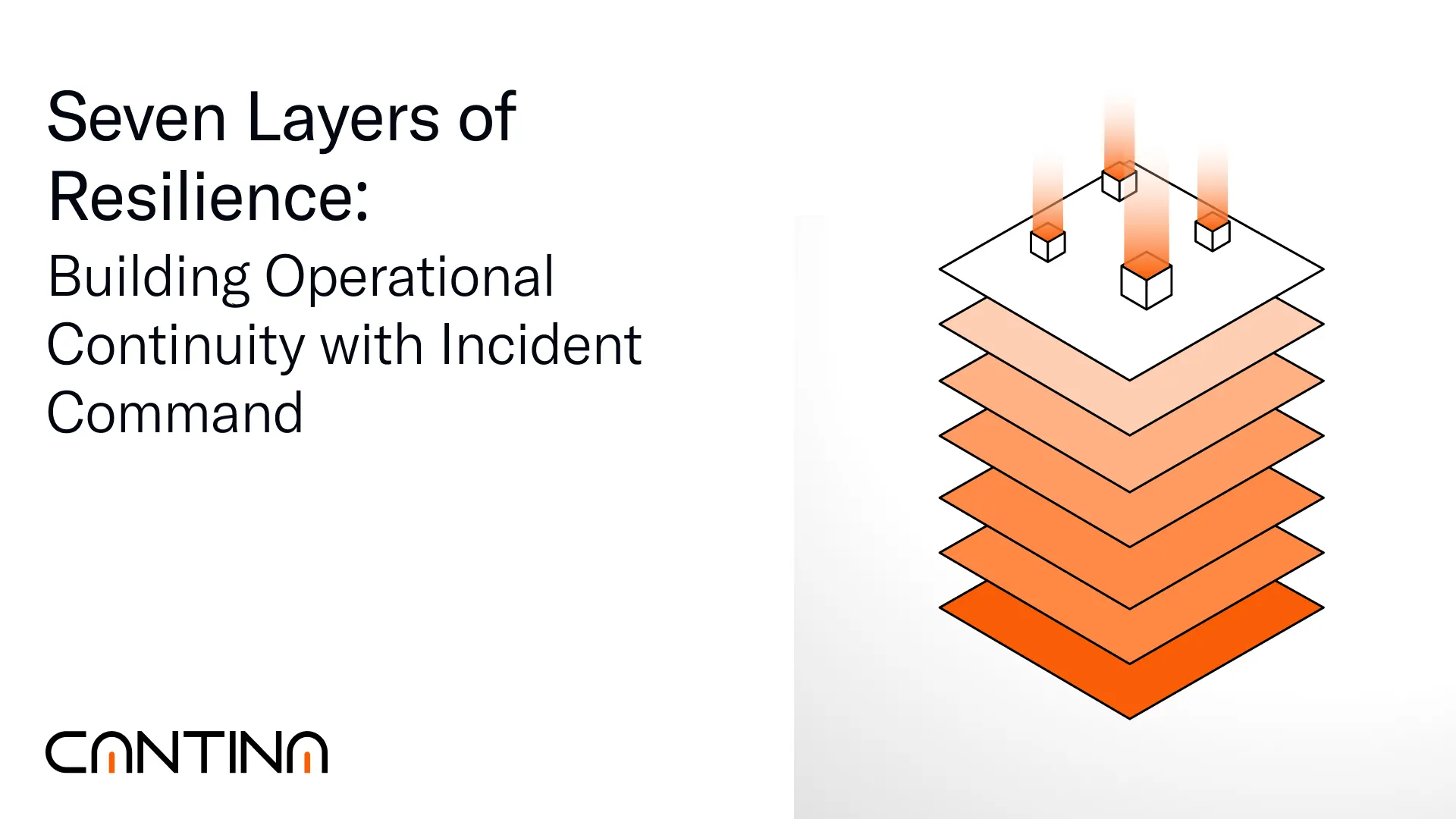Institutional organizations are expected to recover quickly from disruptions. That expectation applies with equal weight to protocols managing capital, custody, governance, and infrastructure in Web3.
In the first half of 2025, protocol-related incidents cost organizations over $2.17 billion. The most significant of these losses were not caused by novel vulnerabilities. They resulted from delayed execution, undefined authority, and fragmented internal coordination. These outcomes reflect a structural absence of operational continuity, not an absence of technical solutions.
Preparedness is now defined by execution under pressure. Incident Command provides that execution by aligning authority, timing, and response across the systems that matter most.
Translating Continuity Planning into Web3 Infrastructure
Business continuity frameworks are standard across regulated industries. These frameworks emphasize system resilience, stakeholder coordination, and structured response. Cantina has adapted those principles for protocols operating in decentralized, composable, and globally distributed environments.
Incident Command enables Web3 organizations to meet institutional expectations for operational continuity. It replaces improvisation with structure and prepares critical actors to execute in real conditions across custody, engineering, legal, governance, and investor-facing roles.
Seven Principles of Continuity, Rebuilt for Protocol Infrastructure
Each layer of Incident Command reflects a principle of continuity planning, redefined for protocol-scale operations and decentralized risk surfaces.
1. Define Response Roles Before They Are Required
Regulated organizations assign predefined roles for incident execution. Incident Command applies this discipline to protocols by operationalizing authority across custody, engineering, communications, and governance.
Outcome: Role-based execution begins without delay. There is no ambiguity in ownership or timing when coordination is critical.
2. Map the Actual Risk Surface
Incident Command maps protocol-specific threat surfaces, governance escalation paths, infrastructure dependencies, and signer distribution. This includes technical and operational risk, not just contract-level logic.
Outcome: Response is aligned with actual failure paths and credential dependencies. Triage and decision-making reflect real-world risk, not abstract models.
3. Prioritize Functions That Preserve Continuity
Not all operations are mission-critical during a threat. Incident Command identifies and protects the systems that preserve solvency, governance quorum, signer availability, and control over protocol execution.
Outcome: Response efforts remain focused. Time and authority are allocated to maintaining continuity where it matters most.
4. Maintain a Live Execution Plan
Incident Command includes a modular response structure with integrated workflows for access control, escalation, forensics, and stakeholder messaging. The system is live and specific to the organization’s infrastructure and governance model.
Outcome: Execution begins immediately upon signal. The organization does not rely on static documentation or unclear escalation trees.
5. Align Communications Across Internal and External Stakeholders
Structured communications are essential. Incident Command includes predefined messaging layers for internal teams, investors, contributors, governance participants, and legal counsel.
Outcome: Messaging is accurate, timely, and aligned across functions. The organization avoids reputation risk from uncoordinated communication.
6. Operate Through Infrastructure Disruption
Incidents may compromise backend systems, custody interfaces, dashboards, or multisig access. Incident Command provides fallback coordination mechanisms, credential contingency plans, and signer sequencing.
Outcome: The response continues, even in degraded infrastructure conditions. Operational authority remains intact.
7. Validate Execution Through Simulations
Incident Command includes live simulations across stakeholder groups, credential compromise drills, phishing escalation exercises, and governance breakdown scenarios.
Outcome: Response capability is not assumed. It is validated in controlled environments before any incident occurs.
From Execution Failure to Structural Command
Most catastrophic outcomes occur after detection. In many incidents, monitoring systems functioned as designed. The failure occurred when organizations were unable to act.
Incident Command exists to ensure that visibility leads to action. It aligns detection with execution by assigning authority, validating preparedness, and sequencing coordination across every operational domain.
Designed From Real Incidents
Each component of Incident Command addresses a known failure point observed during live protocol incidents. These include, but not limited to:
- Uncoordinated signer rotation
- Misaligned communications
- Missing forensic artifacts
- Delayed pauser actions.
Organizations operating with Incident Command do not rely on internal memory or fragmented tools during critical events. They operate with verified structure.
Operational Continuity as Institutional Standard
The organizations using Incident Command are not preparing in theory, they are executing playbooks, preserving evidence, rotating credentials, and coordinating recovery in production environments.
They do this to reduce financial exposure, limit legal liability, retain investor confidence, and maintain compliance alignment across jurisdictions.
Their infrastructure is built to continue functioning when pressure increases.
Cantina is onboarding a limited number of organizations per cycle. Each engagement begins with a readiness assessment, followed by system design, role mapping, and simulation implementation.




